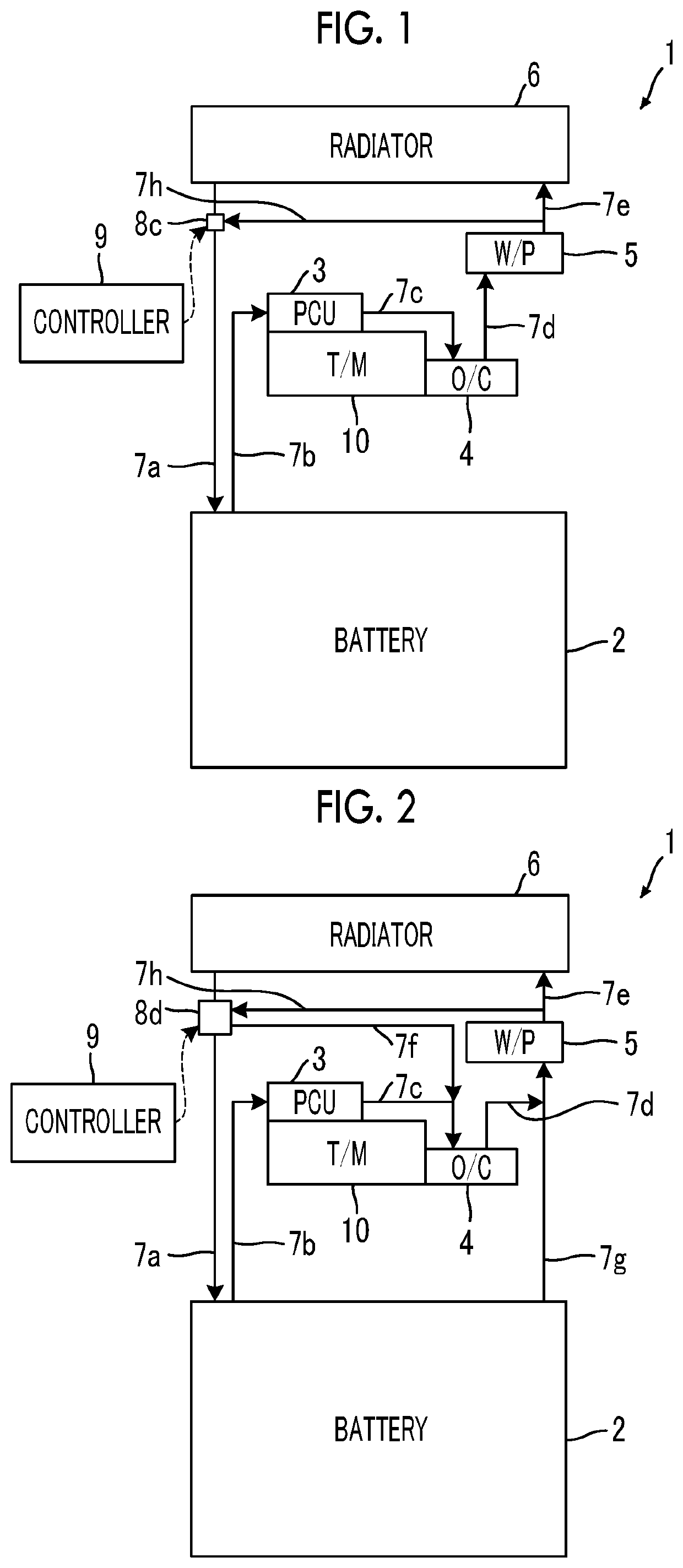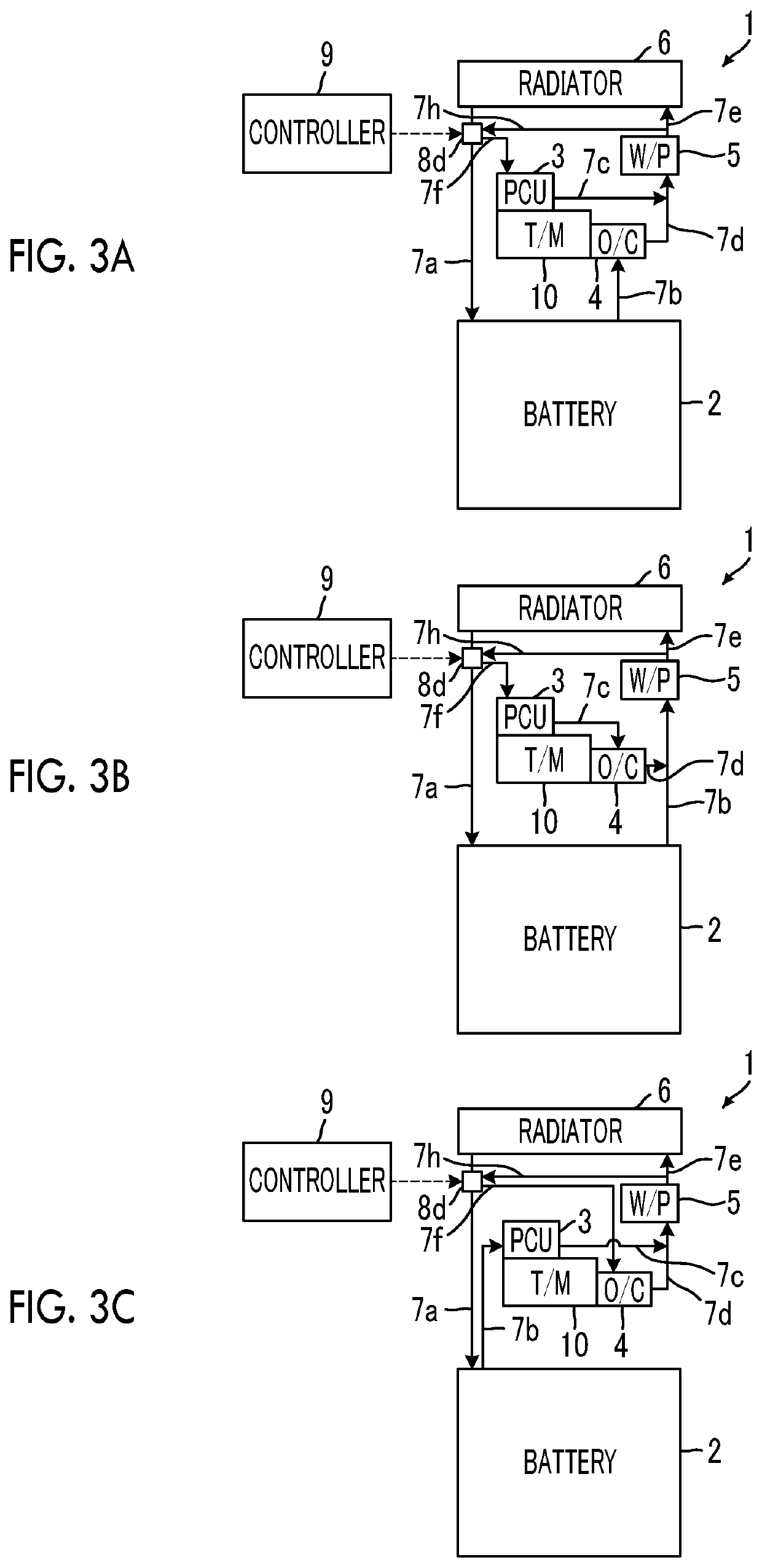Vehicular cooling system
a cooling system and vehicle technology, applied in the direction of electrochemical generators, battery/fuel cell control arrangement, etc., can solve the problems of increasing the cost and weight of a vehicle, insufficient cooling effect of the battery, etc., to increase the temperature of the battery, increase the cooling effect, and improve the cooling
- Summary
- Abstract
- Description
- Claims
- Application Information
AI Technical Summary
Benefits of technology
Problems solved by technology
Method used
Image
Examples
first embodiment
[0019]First, the configuration of a vehicular cooling system according to a first embodiment of the present disclosure will be described with reference to FIG. 1.
[0020]FIG. 1 is a schematic diagram illustrating the configuration of the vehicular cooling system according to the first embodiment of the present disclosure. A vehicular cooling system 1 according to the first embodiment of the present disclosure is mounted in a vehicle, such as an electric automobile, and the vehicular cooling system 1 includes a battery 2, a power control unit (hereinafter, referred to as “PCU”) 3, a transmission oil cooler (hereinafter, referred to as “oil cooler”, and abbreviated as “O / C” in the drawings) 4, a water pump (abbreviated as “W / P” in the drawings) 5, and a radiator 6 as main components, as illustrated in FIG. 1. The target cooling temperature for the battery 2, the target cooling temperature for the PCU 3, and the target cooling temperature for the oil cooler 4 ascend (i.e., rise) in this ...
second embodiment
[0031]The configuration of a vehicular cooling system according to a second embodiment of the present disclosure will be described with reference to FIG. 2, FIG. 3A, FIG. 3B, and FIG. 3C. Hereinafter, only the configurations different from those of the vehicular cooling system 1 in FIG. 1 will be described, and description of the same configurations as those of the vehicular cooling system 1 in FIG. 1 will be omitted.
[0032]FIG. 2 is a schematic diagram illustrating the configuration of the vehicular cooling system according to the second embodiment of the present disclosure. As illustrated in FIG. 2, in the second embodiment, the battery 2 is provided with the coolant passage 7b and a coolant passage 7g. The coolant that has been subjected to heat exchange with the battery 2 is discharged to the water pump 5 through the coolant passage 7g. The outlet of the coolant passage 7d is connected to the coolant passage 7g. A flow-regulating and switching valve 8d is provided at a connection...
PUM
 Login to View More
Login to View More Abstract
Description
Claims
Application Information
 Login to View More
Login to View More - R&D
- Intellectual Property
- Life Sciences
- Materials
- Tech Scout
- Unparalleled Data Quality
- Higher Quality Content
- 60% Fewer Hallucinations
Browse by: Latest US Patents, China's latest patents, Technical Efficacy Thesaurus, Application Domain, Technology Topic, Popular Technical Reports.
© 2025 PatSnap. All rights reserved.Legal|Privacy policy|Modern Slavery Act Transparency Statement|Sitemap|About US| Contact US: help@patsnap.com


